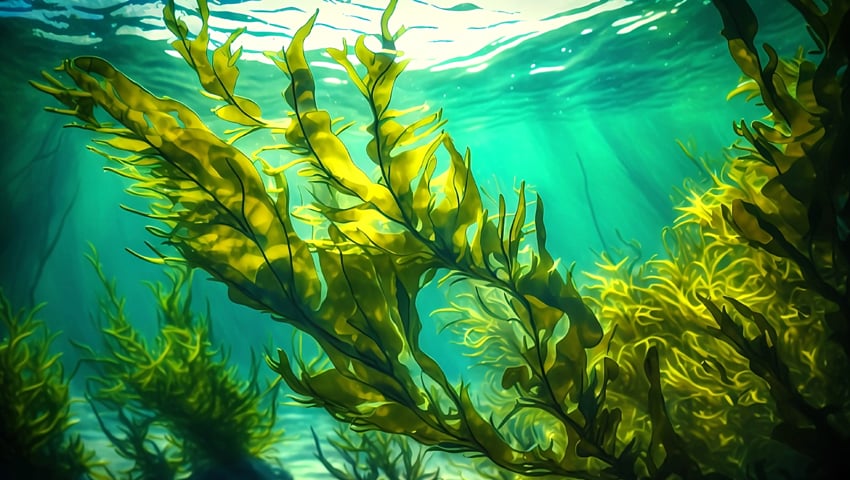THE fabrics and clothing used in the global fashion industry are responsible for tremendous waste and pollution as well as large amounts of greenhouse gases. Research by management consulting firm McKinsey showed that the fashion industry was responsible for 4% of worldwide global emissions in 2018.
But, Women magazine says “As different segments of the fashion industry either ignore or grapple with their responsibility, seaweed is quietly emerging as a sustainable but not-quite-ready-for-primetime superstar.”
As with food, it is hard for individuals to make a difference. There are a few places to recycle clothing and the Ellen Macarthur Foundation estimates that “a truckload of abandoned textiles is dumped in landfill or incinerated every second.”
Women magazine says that “Fossil fuels become plastic which in turn becomes synthetic fabrics; they comprise 60% of all textiles. Whether they end up in landfill or the ocean, plastic micro-beads now inhabit our earth and seas. To keep unwanted clothes out of landfills and be part of the solution, consider a sustainable approach to purging your wardrobe.”
They say that “The good news is that a combination of visionary fashion companies, designers, and serious investors are collaborating to create new solutions. They’re harvesting seaweed, using it to manufacture clothing and non-toxic dyes, experimenting with existing manufacturing methods to improve efficiency, and receiving significant funding to continue innovating.
“Charlie Strand, a student of sustainable fashion for a quarter of a century, has worked with Dior and other brands. He founded Seaweedworks, an artist’s collective that studies and utilizes seaweed, lighting the way for others to share ideas rather than compete. One of Seaweedworks’ designers, Tanguy Mélinand, showed what’s possible by winning the Yinger Prize’s Gold award for sustainable design in 2022 with his seaweed “leather” jacket.
“Fashion company and mad scientist’s fabric lab Pangaia is making seaweed and microalgae into different fibres and wicking treatments and then blending 60% seaweed with 40% organic cotton into t-shirts. The plan for their next version is to be 80/20; they’ve already tested lounge wear made with 100% seaweed.”
Women magazine says “The pros of using seaweed are considerable. Algaeing founder Renana Krebs told Bloomberg, “It takes about 180 days to grow cotton; algae takes only three weeks.” It also grows abundantly in the sea. It can also be harvested in a solar-powered agricultural system, which uses no pesticides and significantly less water compared to growing cotton. When not blended with other fabrics, seaweed is 100% biodegradable.
“Seaweed fashion innovations are attracting investors. A British sustainable fashion startup called Vollebak creates algae-dyed hemp clothing as well as compostable shirts made from algae and wood pulp. Vollebak’s investors include Joe Gebbia, who co-founded Airbnb, and Headspace Health CFO Sean Brecker. Algaeing is seeking $15 million to help them scale up and has already raised $5 million.”
Seaweed’s cheerleaders recognise that there are logistical roadblocks to mass production of seaweed-based clothing. Seaweed clothing fabric is currently scarce and therefore quite expensive and it has a long lead time. However, industry hopes that demand will rise as awareness increases.
